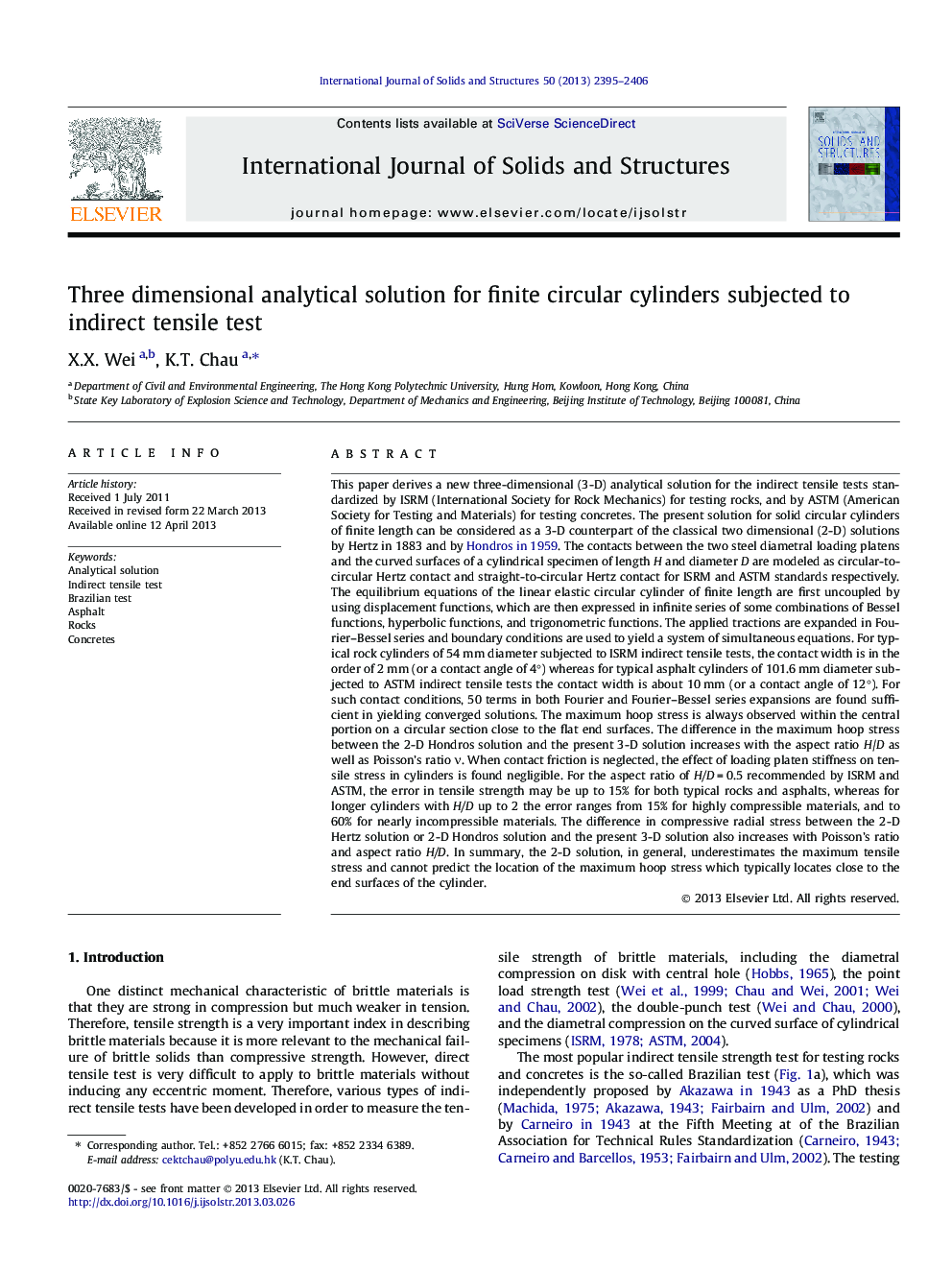| Article ID | Journal | Published Year | Pages | File Type |
|---|---|---|---|---|
| 277874 | International Journal of Solids and Structures | 2013 | 12 Pages |
This paper derives a new three-dimensional (3-D) analytical solution for the indirect tensile tests standardized by ISRM (International Society for Rock Mechanics) for testing rocks, and by ASTM (American Society for Testing and Materials) for testing concretes. The present solution for solid circular cylinders of finite length can be considered as a 3-D counterpart of the classical two dimensional (2-D) solutions by Hertz in 1883 and by Hondros in 1959. The contacts between the two steel diametral loading platens and the curved surfaces of a cylindrical specimen of length H and diameter D are modeled as circular-to-circular Hertz contact and straight-to-circular Hertz contact for ISRM and ASTM standards respectively. The equilibrium equations of the linear elastic circular cylinder of finite length are first uncoupled by using displacement functions, which are then expressed in infinite series of some combinations of Bessel functions, hyperbolic functions, and trigonometric functions. The applied tractions are expanded in Fourier–Bessel series and boundary conditions are used to yield a system of simultaneous equations. For typical rock cylinders of 54 mm diameter subjected to ISRM indirect tensile tests, the contact width is in the order of 2 mm (or a contact angle of 4°) whereas for typical asphalt cylinders of 101.6 mm diameter subjected to ASTM indirect tensile tests the contact width is about 10 mm (or a contact angle of 12°). For such contact conditions, 50 terms in both Fourier and Fourier–Bessel series expansions are found sufficient in yielding converged solutions. The maximum hoop stress is always observed within the central portion on a circular section close to the flat end surfaces. The difference in the maximum hoop stress between the 2-D Hondros solution and the present 3-D solution increases with the aspect ratio H/D as well as Poisson’s ratio ν. When contact friction is neglected, the effect of loading platen stiffness on tensile stress in cylinders is found negligible. For the aspect ratio of H/D = 0.5 recommended by ISRM and ASTM, the error in tensile strength may be up to 15% for both typical rocks and asphalts, whereas for longer cylinders with H/D up to 2 the error ranges from 15% for highly compressible materials, and to 60% for nearly incompressible materials. The difference in compressive radial stress between the 2-D Hertz solution or 2-D Hondros solution and the present 3-D solution also increases with Poisson’s ratio and aspect ratio H/D. In summary, the 2-D solution, in general, underestimates the maximum tensile stress and cannot predict the location of the maximum hoop stress which typically locates close to the end surfaces of the cylinder.
